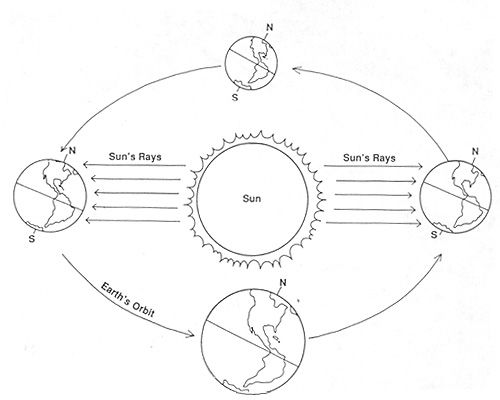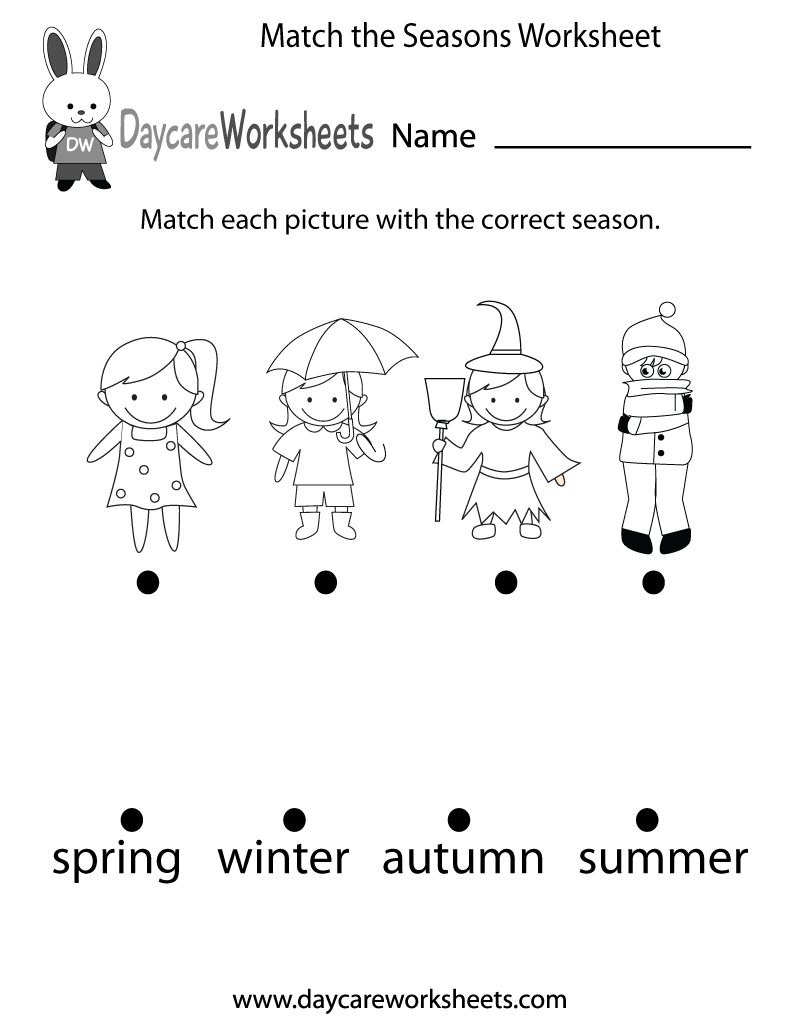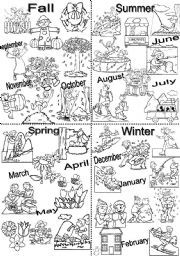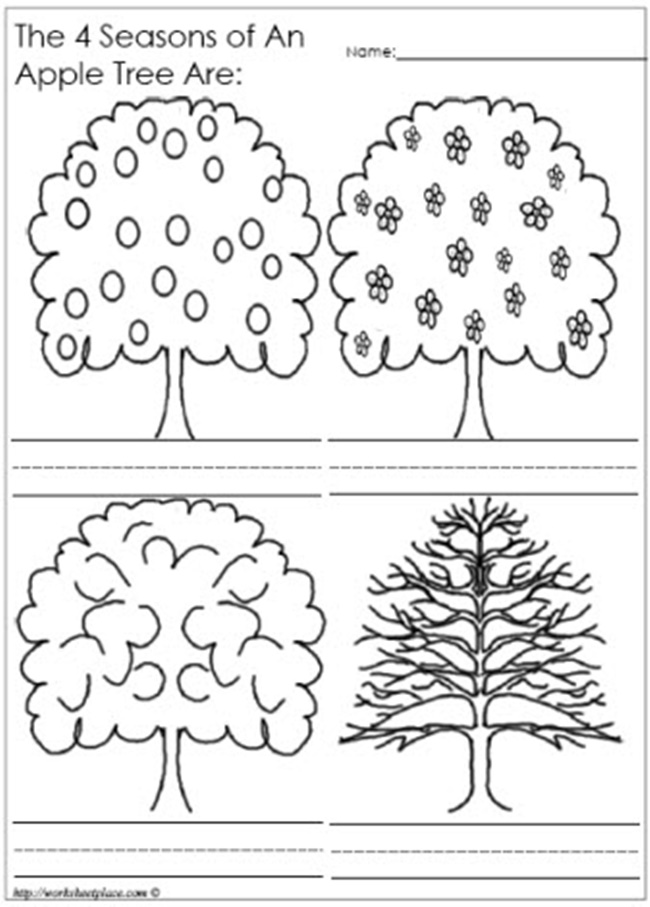Earth Seasons Worksheets Free Printable
Are you searching for a helpful resource to teach your child about the fascinating world of Earth's seasons? Look no further! We have a range of free printable worksheets that are perfect for children of all ages. These worksheets cover a variety of topics related to the seasons, such as the movement of the Earth, weather patterns, and their impact on our daily lives. With engaging exercises and thought-provoking questions, your child will develop a solid understanding of this captivating subject.
Table of Images 👆
More Other Worksheets
Kindergarten Worksheet My RoomSpanish Verb Worksheets
Healthy Eating Plate Printable Worksheet
Cooking Vocabulary Worksheet
My Shadow Worksheet
Large Printable Blank Pyramid Worksheet
Relationship Circles Worksheet
DNA Code Worksheet
Meiosis Worksheet Answer Key
Art Handouts and Worksheets
What are the Earth seasons?
The Earth has four seasons: spring, summer, autumn, and winter. These seasons occur due to the tilt of the Earth's axis and its orbit around the sun. Spring is associated with rebirth and renewal, summer with warmth and growth, autumn with harvest and change, and winter with cold and dormant landscapes. Each season has its own unique characteristics and brings a variety of weather patterns and natural phenomena.
How do Earth's tilt and orbit around the sun affect the seasons?
Earth's tilt and orbit around the sun directly affect the seasons by causing changes in the amount and angle of sunlight received in different parts of the planet. The tilt of Earth's axis (about 23.5 degrees) results in different hemispheres receiving varying amounts of direct sunlight throughout the year, leading to the summer and winter seasons. As Earth orbits the sun, this tilt causes the sun's rays to strike the surface at different angles, influencing temperatures and daylight hours. These factors create the cyclical changes in weather and temperature that we experience as the four seasons: spring, summer, autumn, and winter.
What causes the solstices and equinoxes?
The solstices and equinoxes are caused by the tilt of the Earth's axis as it orbits the sun. The solstices occur when the tilt of the Earth's axis is either most inclined towards or away from the sun, resulting in the shortest and longest days of the year. The equinoxes occur when the tilt of the Earth's axis is not inclined towards or away from the sun, resulting in equal lengths of day and night. These events mark the changing of seasons and occur twice a year during the Earth's orbit around the sun.
Describe the characteristics of each season.
Spring is typically characterized by blooming flowers, new growth, and warmer temperatures. Summer is known for long days, high temperatures, and outdoor activities. Fall brings changing leaves, cooler weather, and harvest time. Winter is marked by cold temperatures, snowfall, and shorter days. Each season has its own unique beauty and activities that make it special.
How do the lengths of day and night change throughout the year?
The lengths of day and night change throughout the year due to the tilt of the Earth's axis. During the summer solstice, which occurs around June 21st, the Northern Hemisphere experiences the longest day and the shortest night, while the Southern Hemisphere experiences the shortest day and the longest night. Conversely, during the winter solstice, around December 21st, the lengths are reversed, with the Northern Hemisphere experiencing the shortest day and the longest night. The lengths of day and night gradually change throughout the year as the Earth orbits the sun, leading to variations in daylight hours and night hours.
Explain the concept of the midnight sun and polar night during certain seasons.
The concept of the midnight sun occurs during the summer solstice in the Earth's polar regions, when the sun remains visible at local midnight, creating 24 hours of daylight. Conversely, the polar night happens during the winter solstice in these regions, where the sun remains below the horizon for 24 hours, causing continuous darkness. These phenomena are due to the tilt of the Earth's axis and its orbit around the sun, resulting in varying daylight lengths at different latitudes during certain seasons.
What are some common activities and events associated with each season?
In the spring, common activities and events include gardening, hiking, picnicking, and attending outdoor festivals. Summer is usually associated with swimming, barbecues, going to the beach, and enjoying music concerts or outdoor movies. Fall is known for activities like apple picking, pumpkin carving, attending Oktoberfest celebrations, and watching football games. Winter typically brings activities such as skiing, ice skating, building snowmen, and celebrating holidays like Christmas and New Year's Eve.
How do seasons differ in the Northern and Southern Hemispheres?
Seasons in the Northern and Southern Hemispheres are opposite of each other. When it is summer in the Northern Hemisphere, it is winter in the Southern Hemisphere, and vice versa. This is due to the tilt of Earth's axis as it orbits the sun, causing different parts of the planet to receive varying amounts of sunlight throughout the year, resulting in different seasons in each hemisphere.
Describe the types of weather typically experienced during each season.
In general, spring is characterized by moderate temperatures, increasing daylight, and periods of rain as well as the blooming of flowers and trees. Summer is known for its hot temperatures, longer days, and potential for thunderstorms. Fall weather tends to bring cooler temperatures, colorful foliage, and the potential for rain and wind. Winter is usually cold and snowy in many regions, with shorter days and the possibility of freezing temperatures and storms.
How do animals and plants adapt to the changing seasons?
Animals and plants adapt to changing seasons through various mechanisms such as hibernation, migration, dormancy, flowering, and shedding of leaves. Hibernation allows animals to conserve energy during the winter months, while migration helps them find food and suitable habitats as weather changes. Plants adapt by adjusting their growth cycles to bloom and produce seeds during favorable seasons and enter dormancy to conserve energy during harsh periods. Additionally, shedding leaves helps trees conserve water and energy during the colder months. These adaptations ensure the survival and reproduction of species in the face of changing environmental conditions.
Have something to share?
Who is Worksheeto?
At Worksheeto, we are committed to delivering an extensive and varied portfolio of superior quality worksheets, designed to address the educational demands of students, educators, and parents.

























Comments